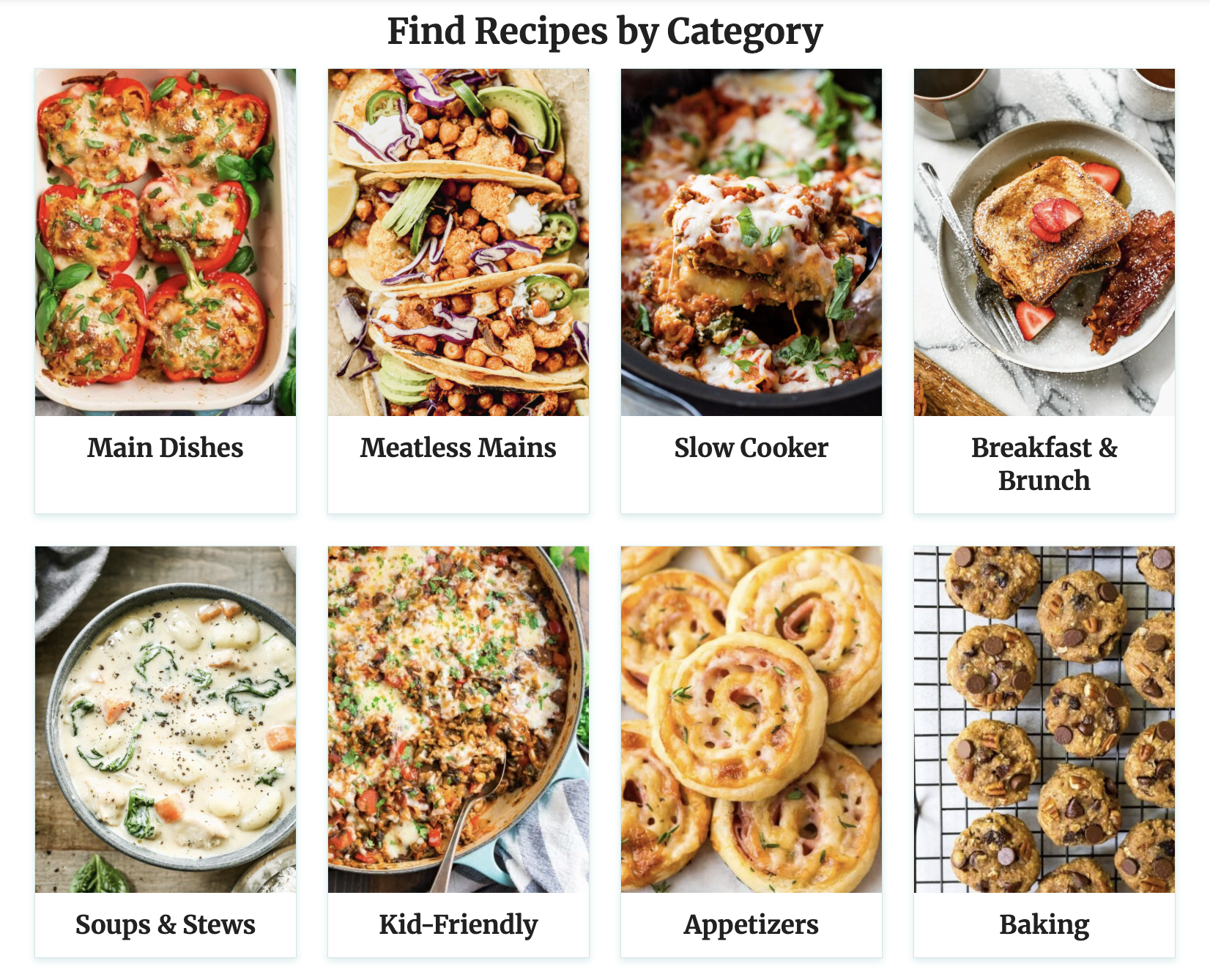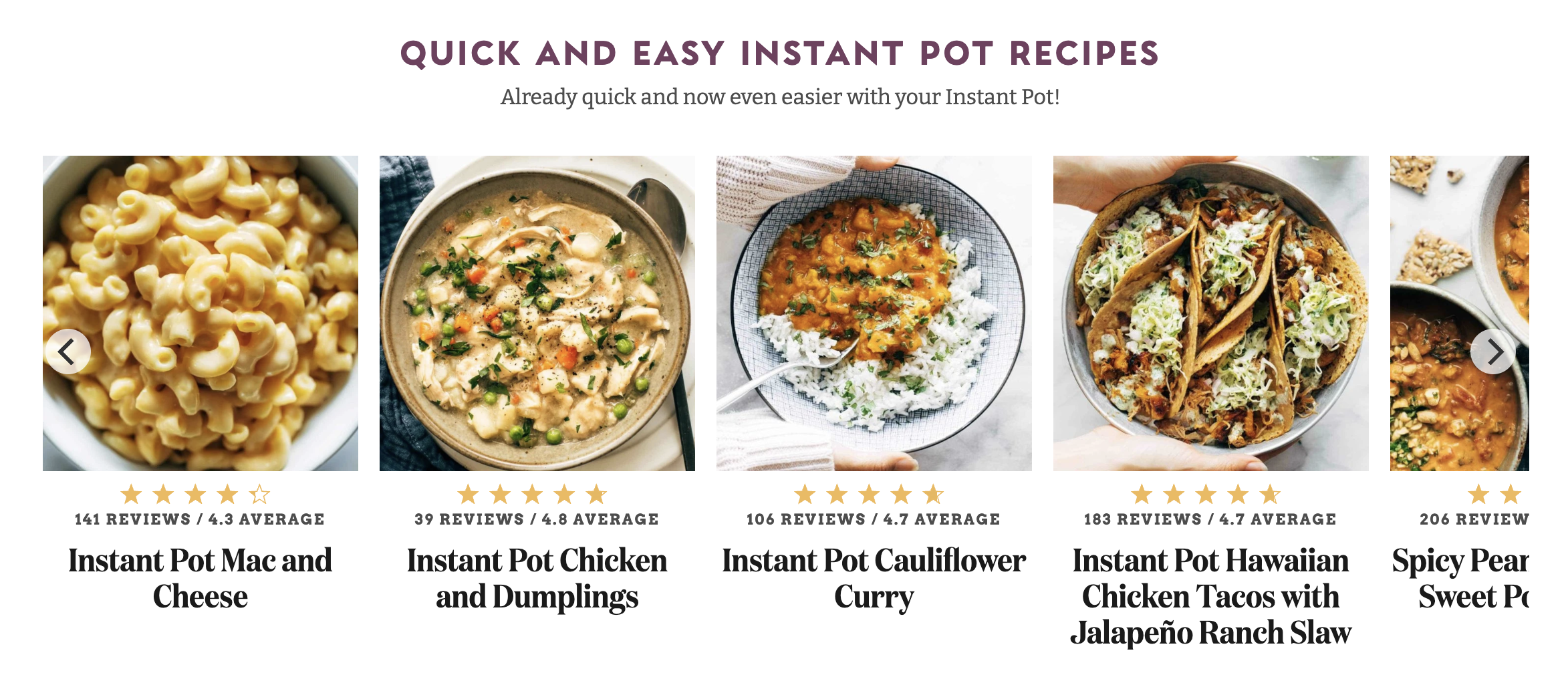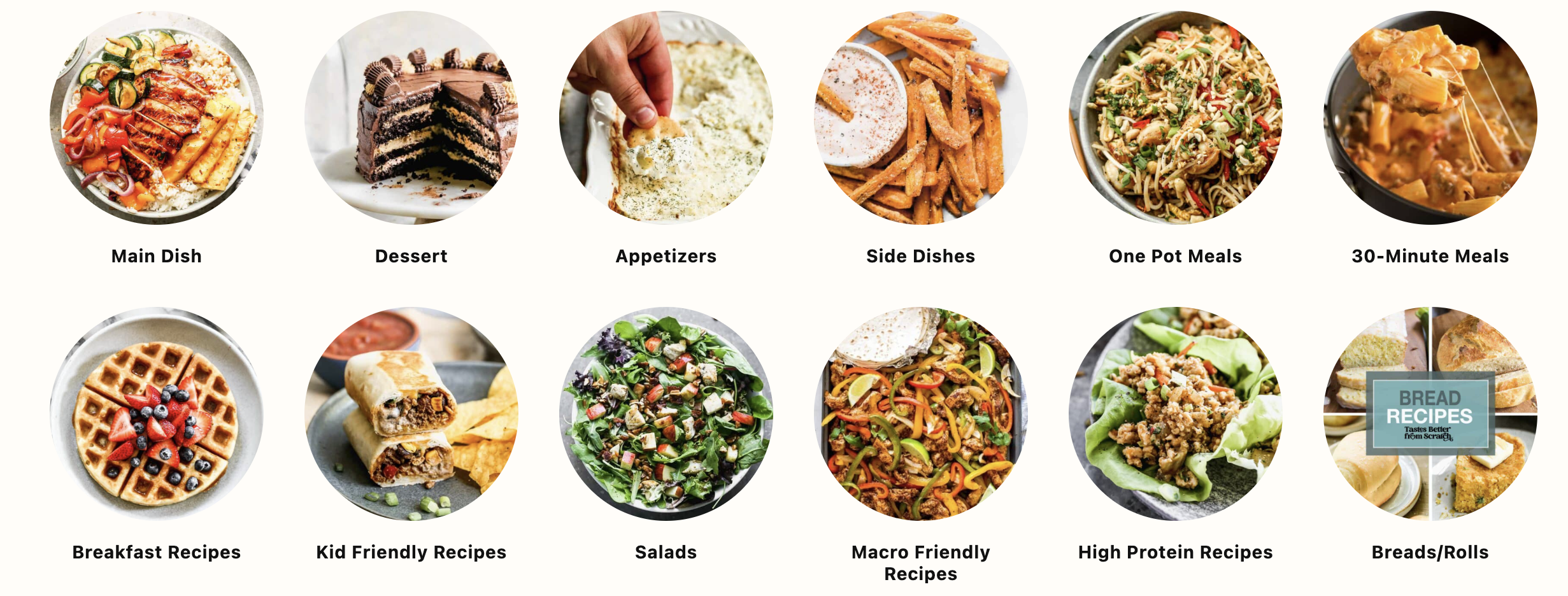As food bloggers, we spend so much of our time thinking about flavors, ingredients, and presentation, but what about structure? No, not the structure of a recipe, but the structure of your blog itself.
If you’ve ever wondered how many categories your blog should have, how to optimize them for SEO, or how to clean up your categories, you’re in the right place! In this post, we’re digging into the right way to categorize your recipe posts so you can boost SEO, improve user experience, and keep your content organized as your blog grows.

Information Architecture (IA): Your Blog’s Backbone
Before diving into category names and the optimal number of categories for your blog, let’s talk structure.
Information Architecture (IA) refers to how your content is organized and navigated. Think of it like the foundation of your blog — if it’s shaky, everything built on top of it will eventually come tumbling down.
According to the fine folks over at TopHatRank, a clean IA is essential for helping search engines determine what topics you cover and which pages should rank. Simply put, good structure supports better search visibility and reader experience.
How does this tie into your categories? Categories play a major role in food blog architecture. They group related recipes together and act as a roadmap for your content. Without clear, intentional categories, your site can feel scattered, impacting your bounce rate and SEO.
Pro tip: Think like your readers. What would you want to click on if you were looking for a new dinner idea?
How to Optimize Your Categories for SEO
Properly categorizing your recipes isn’t just about making your site easier to navigate. It’s also a key part of your SEO strategy. Categories help Google understand the topics your blog focuses on. When you consistently group similar content together, you build topical relevance, and that can improve your chances of ranking.
Here’s the part many bloggers overlook: category pages can (and should!) be optimized for search. Instead of just listing posts, each category page should include a short, helpful introduction that explains what kind of content readers will find there. Check out how Erin over at Meaningful Eats has set up her Gluten-Free Cakes category page below! 🍰

For example, your “Quick Dinners” category might include a description like this:
These easy weeknight dinners come together in under 30 minutes and are perfect for busy schedules!
A short and sweet intro helps readers know they’re in the right place and gives Google more context about what the page is about.
You may also want to consider adding a meta description to each category. This is the short blurb that shows up in search results, so use it to highlight what makes your category unique. Be sure to include relevant keywords naturally, just like you would for a blog post!
Keep Your Category Count Small, but Mighty
One of the biggest mistakes bloggers make? Having too many categories.
Try to aim for 5–10 core categories total at the start. Yes, total. That may sound small, but it forces you to be intentional. Every category page is an SEO opportunity, but if Google sees a bunch of underdeveloped, empty-looking category pages? It’s a signal to them that your site isn’t very authoritative on those topics.

Categories should be:
- Broad enough to house 10–25+ recipes (more on that below!)
- Distinct from one another
- Strategically selected to reflect how people search for and browse recipes
Think “Breakfast,” “Lunch,” “Dinner,” “Snacks,” “Desserts,” or “Vegan.” Not “Summer Smoothies.”
If you’ve got 25 categories but only 3 recipes in some of them? It’s time to consolidate!
How Many Posts Should Be in Each Category?
You should try to aim for at least 10–25 posts per category. Why? Category pages with just one or two posts:
- Look thin to Google (which can hurt rankings)
- Feel incomplete to your readers
- Can clutter up your site structure
When you create a new category, it should be because you already have enough content to support it, or you’re about to publish a series that fills it out quickly.
If a category only has a handful of recipes and isn’t gaining traction, it’s often better to merge it with a related category or simply remove it.
Think of categories like folders in your recipe binder — not every recipe gets its own tab!
How to Split an Overgrown Category
It’s natural for some categories to grow faster than others. If you’ve been blogging for a while, your “Dinner” or “Desserts” categories might have hundreds of posts. So, when does it make sense to split a category into subtopics?
Start by asking: Would splitting this category help my readers find what they want faster? If the answer is yes, and you have enough content to support it, it’s probably time. For example, if you have 80+ dinner recipes and 25 of them are quick meals, it could be worth creating a new category like “Quick Dinners.” The key is to only create new categories when you have at least 10–15 posts ready to go or actively being developed.

Don’t split just for the sake of neatness. Each category should still stand alone as a helpful, topic-specific hub, but you’ll also want to be careful not to create too many overlapping or redundant categories in the process — clarity is key here!
How to Clean Up Your Existing Categories
If your categories are a little out of control, don’t panic. You’re not alone, and it’s totally fixable. The first step is to perform a content audit. List out all your existing categories and note how many posts are in each. You might be surprised to find some categories with just one or two recipes (yep, time to merge or delete those).
Next, look for overlaps. If you have both “Lunch” and “Lunch Recipes,” pick one. If “Healthy Dinners” and “Weeknight Meals” have nearly identical content, consider combining them into a single, more robust category. You’ll also want to rename any unclear or awkward categories — make sure each one clearly communicates what it includes, both to readers and search engines.

Most blogging platforms will automatically redirect old category URLs when you merge or delete them, but it’s always smart to double-check your redirects. And once your categories are cleaned up, revisit the top-performing ones to add short intros and SEO-friendly meta descriptions like we talked about earlier!
Ready to Reorganize Your Recipe Categories?
Having a clear, intentional category structure is one of the most effective ways to make your blog easier to use and find. It helps your readers discover more of your content, keeps your SEO strong, and makes it much easier to manage your site as it grows.
If your categories could use a refresh, now’s the perfect time to start. Start small: audit your current setup, clean up what you don’t need, and optimize what’s already working. Your future self and your readers will thank you.
We’d love to hear how you’re structuring your recipe content! Are you using broad categories, getting creative with subtopics, or doing a full-on cleanup? Drop a comment and share your approach! Your tips (and questions!) might help another blogger find their way, too. 🙌
Your writing is not only informative but also incredibly inspiring. You have a knack for sparking curiosity and encouraging critical thinking. Thank you for being such a positive influence!